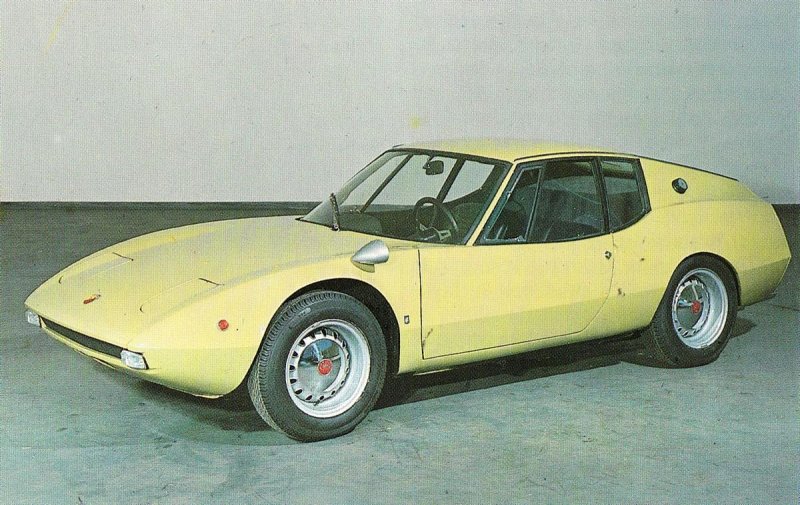The late 1960s marked a golden era for Italian sports cars, and among the jewels of this period stands the Abarth Scorpione 1300 SS. Making its debut at the 1968 Geneva Motor Show, this compact powerhouse emerged from Carlo Abarth’s workshop as one of the company’s final independent creations before its acquisition by Fiat.
Born from racing ambitions and Italian craftsmanship, the Scorpione 1300 SS embodied the essence of 1960s sports car philosophy — lightweight construction merged with potent performance. Standing merely 41.3 inches tall, this diminutive beast packed surprising punch beneath its sculptured hood.
Engineering Excellence
The heart of the Scorpione beats with remarkable precision — a 1280cc powerplant that showcases Italian engineering at its finest. The inline-four engine, featuring overhead valves, delivered impressive output through various configurations. The twin Weber carburetor setup unleashed 100 horsepower, while the single carburetor variant still managed a respectable 75 horsepower.
“The Scorpione’s engine represented a masterclass in compact power delivery. Its bore and stroke dimensions were perfectly calculated for both performance and reliability.” — Marco Rossi, Vintage Italian Auto Specialist
Fact!
The engine's bore was increased by 2.5mm from the standard version, resulting in the final 1280cc displacement — a modification that significantly enhanced performance while maintaining reliability.
Every component served a purpose, from the synchronized four-speed gearbox to the balanced weight distribution. Weighing just 730 kilograms, the power-to-weight ratio proved instrumental in achieving its impressive 180 km/h top speed and 12-second sprint to 100 km/h.
Design Mastery
Giuseppe Rinaldi’s pen for Carrozzeria Francis Lombardi Company crafted more than mere transportation — he created automotive art. The distinctive “inverted” hood design became a signature element, while the sleek profile emphasized the car’s sporting intentions.
“Rinaldi’s design for the Scorpione exemplified the perfect balance between form and function. Every curve served a purpose.” — David Thompson, Classic Car Design Historian
The compact dimensions — 3720mm length, 1500mm width — wrapped around a 2050mm wheelbase created perfect proportions. These measurements weren’t arbitrary; they optimized handling characteristics while maintaining aesthetic harmony.
The interior reflected the same attention to detail, with driver-focused instrumentation and purposeful ergonomics that emphasized the car’s sporting character.
Competition Heritage
Track performance defined the Scorpione’s development. The independent suspension system on all four corners, coupled with disc brakes all around, provided handling capabilities that surpassed many contemporary competitors.
Notice!
While most sports cars of the era still used drum brakes at the rear, Abarth's decision to install disc brakes on all four wheels demonstrated their commitment to superior braking performance.
The rear-wheel-drive layout, combined with the car’s balanced weight distribution, delivered precise handling characteristics that made it a formidable competitor on both road and track.
Looking Back, Racing Forward
The Scorpione 1300 SS represents more than just another sports car from the 1960s — it embodies the spirit of independent Italian automotive craftsmanship. Its production run from 1968 to 1972 marked the end of an era, as Abarth’s merger with Fiat approached.
Today, the Scorpione stands as testimony to a time when small manufacturers could create extraordinary machines through innovation and determination.
Pros and Cons
| Advantages | Disadvantages |
|---|---|
| Exceptional power-to-weight ratio | Limited production numbers making parts scarce |
| Advanced brake system for its era | Tight interior space might not suit taller drivers |
| Distinctive Italian design | Complex twin Weber carburetor setup requires expert maintenance |
| Outstanding handling characteristics | Limited luggage space |
| Historical significance | Restoration costs can be substantial |

